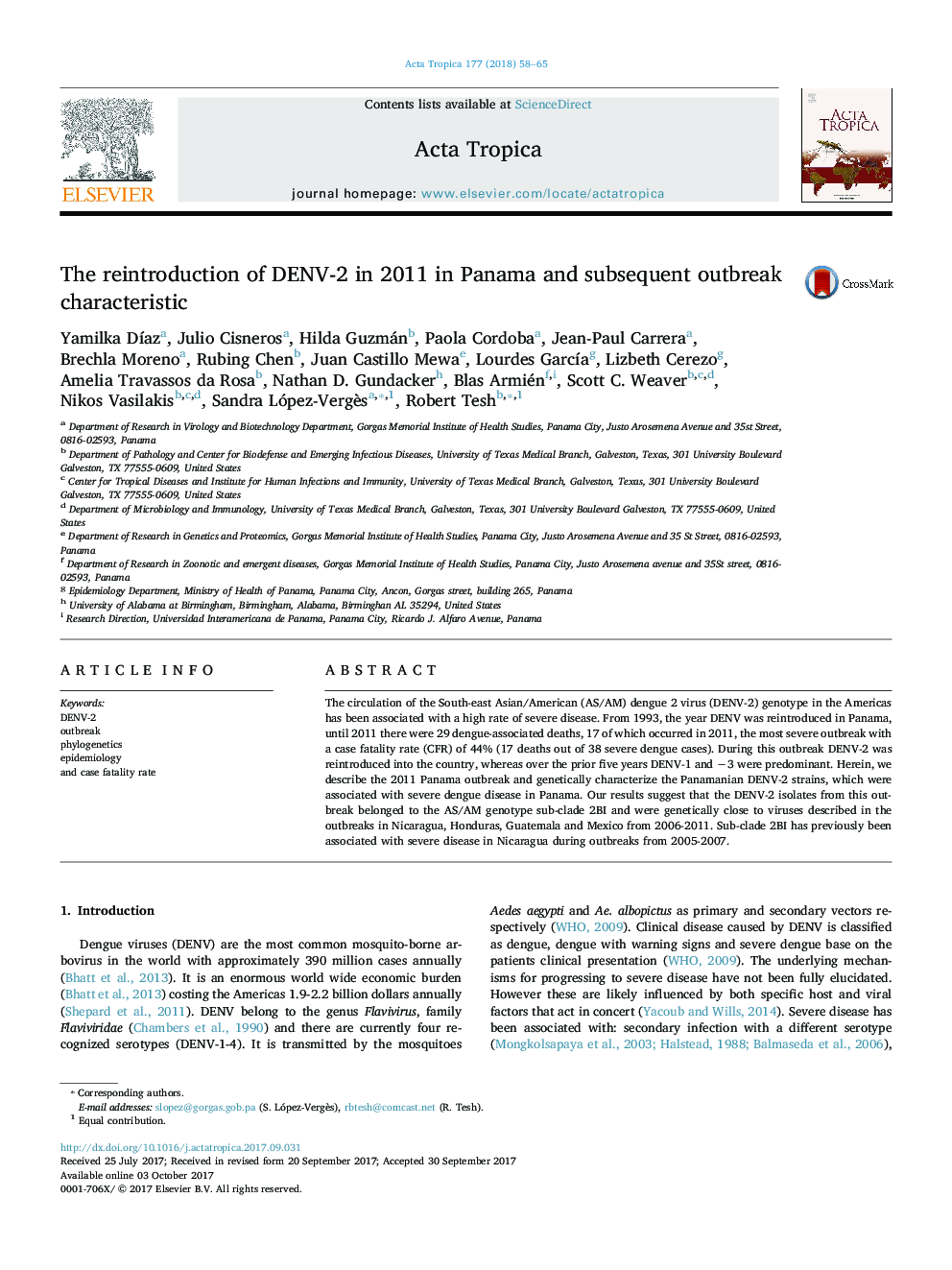| Article ID | Journal | Published Year | Pages | File Type |
|---|---|---|---|---|
| 5670984 | Acta Tropica | 2018 | 8 Pages |
â¢During 2011, DENV-2 South-east Asian/American genotype, sub-clade 2BI was introduced in Panama, after 5 years without detection of DENV-2. This sub-clade, has been previously associated with severe disease in others Central American countries.â¢During the outbreak, a moderate correlation between the Aedes infestation index and dengue cases was observed when cases surpassed the third quartile of the endemic cannel.â¢During 2011, the introduction of DENV-2 AS/AM genotype subclade 2b.I after five years without DENV-2 circulation might have contributed to the increase in cases and the high case fatality rate of deaths over DHF cases.â¢Two mutations in the E gene and NS2A 2011 Panamanian strains have not been described previously.
The circulation of the South-east Asian/American (AS/AM) dengue 2 virus (DENV-2) genotype in the Americas has been associated with a high rate of severe disease. From 1993, the year DENV was reintroduced in Panama, until 2011 there were 29 dengue-associated deaths, 17 of which occurred in 2011, the most severe outbreak with a case fatality rate (CFR) of 44% (17 deaths out of 38 severe dengue cases). During this outbreak DENV-2 was reintroduced into the country, whereas over the prior five years DENV-1 and â3 were predominant. Herein, we describe the 2011 Panama outbreak and genetically characterize the Panamanian DENV-2 strains, which were associated with severe dengue disease in Panama. Our results suggest that the DENV-2 isolates from this outbreak belonged to the AS/AM genotype sub-clade 2BI and were genetically close to viruses described in the outbreaks in Nicaragua, Honduras, Guatemala and Mexico from 2006-2011. Sub-clade 2BI has previously been associated with severe disease in Nicaragua during outbreaks from 2005-2007.
Graphical abstractDownload high-res image (150KB)Download full-size image
